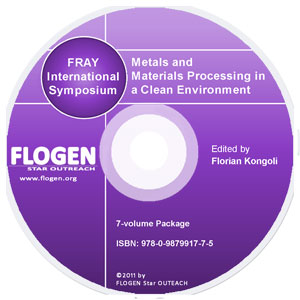
CD shopping page |
2011-Sustainable Industrial Processing Summit
|
| Editors: | Florian K |
| Publisher: | Flogen Star OUTREACH |
| Publication Year: | 2012 |
| Pages: | 708 pages |
| ISBN: | 978-0-9879917-1-3 |
| ISSN: | 2291-1227 (Metals and Materials Processing in a Clean Environment Series) |
Recovery Of Manganese From Steelmaking Slag
Shinya Kitamura1; Sun-Joong Kim1; Hiroyuki Shibata1; Katsunori Yamaguchi2;1TOHOKU UNIVERSITY, Sendai, Japan; 2IWATE UNIVERSITY, Morioka, Japan;
Type of Paper: Regular
Id Paper: 43
Topic: 5
Abstract:
Manganes is one of the important alloying elements in high grade steels. In Japan, the total amount of Mn in steelmaking slag is close to the imported amount. Therefore, the steelmaking slag is considered to be a resource of Mn. Although ferro-manganese alloy can be produced by a reduction of steelmaking slag, P content in the alloy is too high and Mn content is too low for the use of steelmaking process as an alloying material.The authors have proposed a new Mn recycling process. In the proposed process, at first steelmaking slag is sulfurized, making it possible to separate the P from the manganese by creating a liquid sulfide phase(matte). After that, high purity ferro-manganese alloys can be made by the desulfurization of the matte, which emininates P. Fundamental knowledge about the distribution of Fe, Mn and P in both the matte and the steelmaking slag is required to clarify the feasibility of this process. In this study, the equilibrium distribution of P, Mn and Fe between FeS-MnS matte and FeO-MnO- SiO2-MgO-P2O5 slag was determined under the controlled partial pressure of oxygen and sulfur. It was revealed that P was not distributed to the matte and that a complete separation of P from Mn was achieved. The distribution ratio of Mn in the matte increased as the partial pressure of sulfur increased.